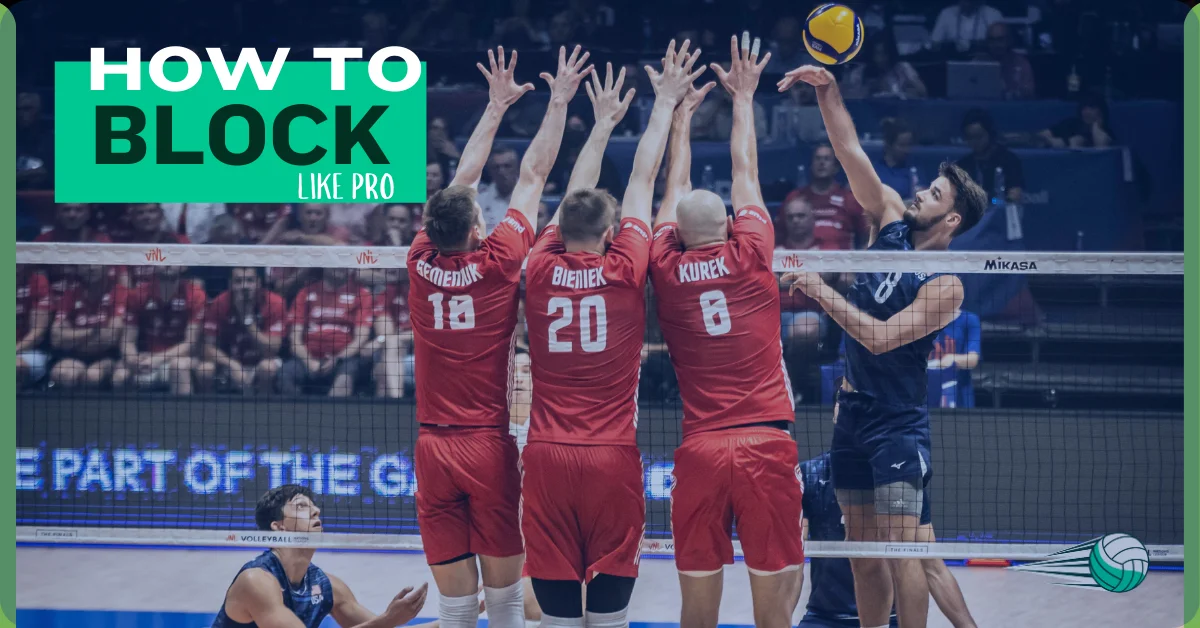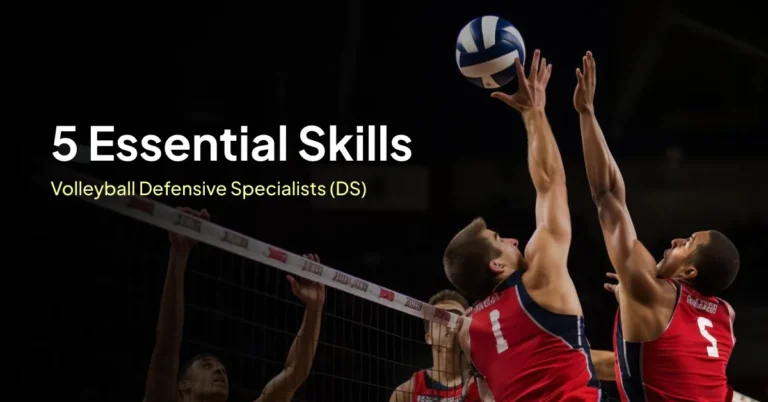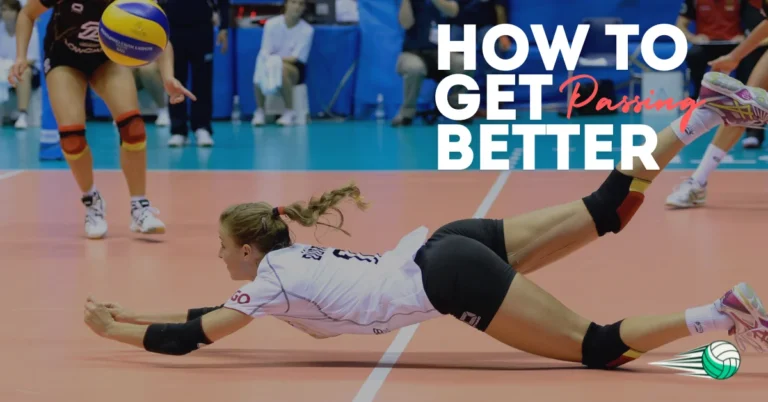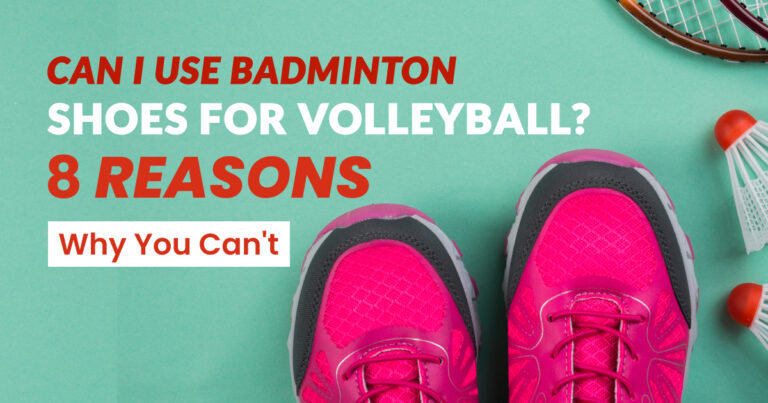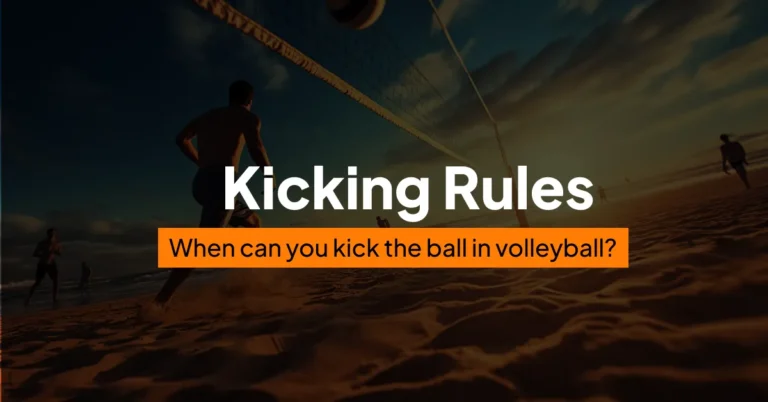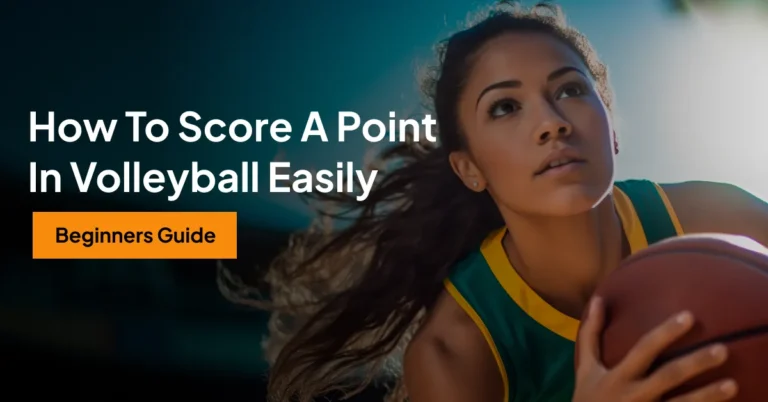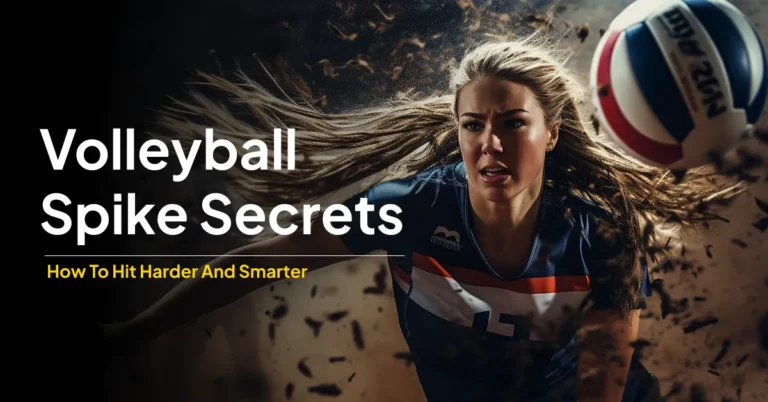How to Block in Volleyball – 3 Tips to be a Better Blocker
Blocking in volleyball is a critical skill that can turn the tide of a game. It’s a defensive maneuver where a player at the net deflects the opponent’s spiked ball back to their side of the court and prevents them from scoring the point.
Blockers are the main defense of the team that slow down the attack with 3 types of blocking techniques i.e single, double or triple blocking. Blocking in volleyball is a technique that needs to be learned.
This volleyball blocking guide will cover everything about how to block in volleyball with basics to advanced blocking techniques and strategies.
Whether you’re a beginner looking to understand how to be a better blocker in volleyball or an experienced player aiming to learn how to block like a pro, by following a few blocking tips and tricks, you can be a great blocker in Volleyball for your team.
Before going into blocking details, let’s understand what is blocking in volleyball?
What is Blocking in Volleyball?
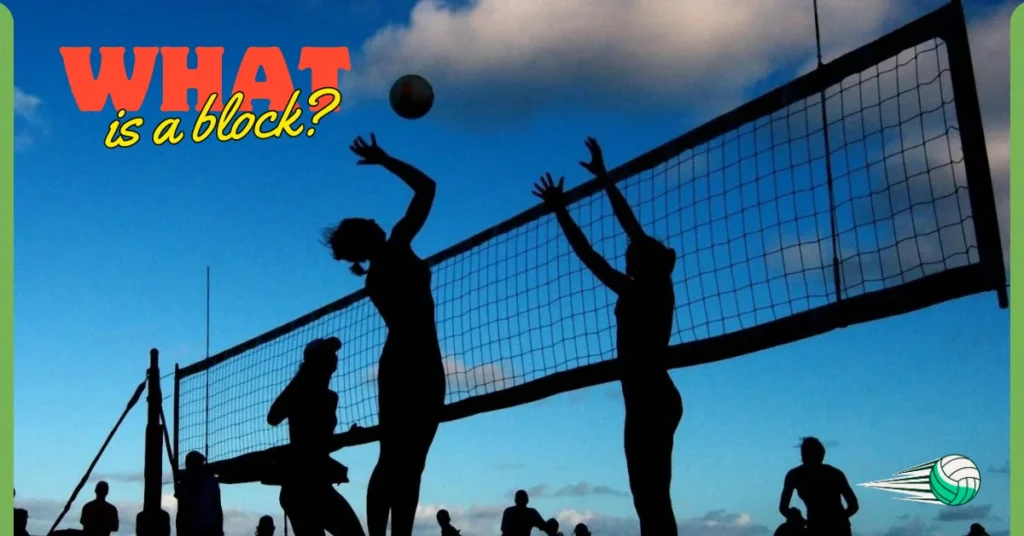
Blocks in volleyball are defensive moves where one or more players (specifically from the front row) jump near the net with their hands raised to stop or alter the ball’s trajectory coming from an opponent’s spike.
Opponent team’s attacker receives the ball from their setter and spikes it as hard as he can to land the ball in the opponent court to score a point.
The primary goal of a volleyball blocker is to prevent the ball from crossing the net and scoring a point. Effective blocking can significantly disrupt the opposing team’s offense.
Want to know: How to score a point in Volleyball easily
Blocking involves strategic positioning, impeccable timing, and effective hand and foot coordination between the players.
Types of Blocking in Volleyball
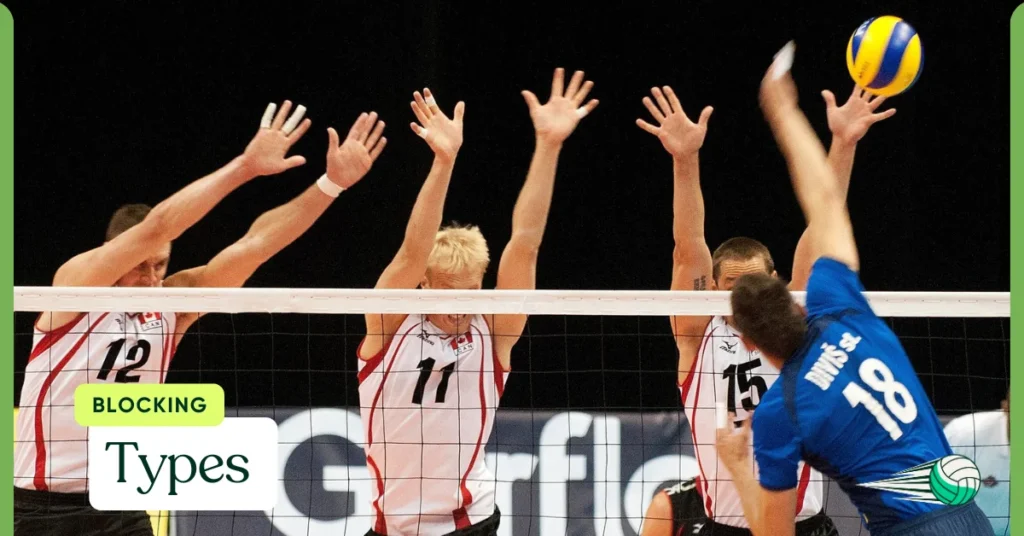
There are 3 main types of blocks In volleyball based on the number of players involved. Let’s have a look.
- Single Block whereOne player attempts to block the ball.
- Double Block where 2 players coordinate to block together.
- Triple Block where 3 players jump and extend their arms to form a solid wall.
Want to know: How to Jump Higher in Volleyball? 5 Secret Tips & Excersises
Positions to Block
Blocking positions are crucial in volleyball. Generally, blockers position themselves at the net, aligning with the setter’s position. But there are specific positions on the court where players are designated to execute blocking, ensuring the net is well covered and impenetrable for attacks.
Each position has unique responsibilities depending on the rotation and the opposing team’s setup
3 dedicated blocking positions are
- Outside Blocker also called left-side blocker, positioned at left side of the net and blocks opponent’s right side hitter. This player also transitions into an attacking role after completing the block.
- Middle Blocker also called Middle Hitter, Positioned in the center of the net and specializes in blocking quick attacks from the middle of the opponent’s court. It covers a large portion of the net and is responsible for assisting in blocking attacks from both sides.
- Right-Side Blocker also called Opposite Blocker, Positioned on the right side of the net and blocks the opponent’s outside hitter. It is similar to the outside blocker where he can attack after blocking.
Understanding the positions in volleyball helps you in coordinating with your teammates and ensuring effective coverage of the net.
Blocking Techniques and Strategies
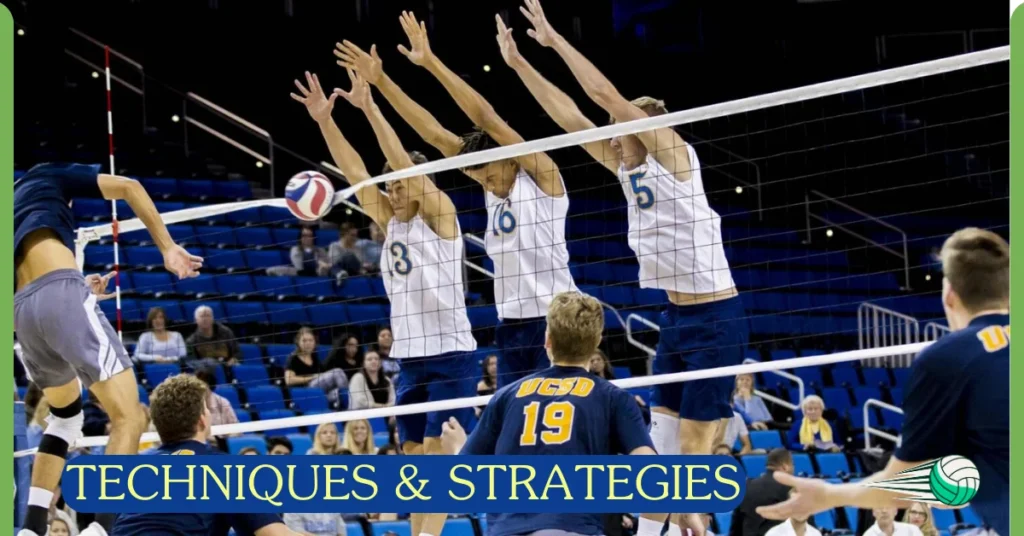
Mastering the volleyball blocking techniques involves proper hand position, precise footwork for volleyball blocking and above all, the ability to read the game.
Hand Position for Volleyball Blocking
When you are trying to block the spike of your opponent’s hitter, your hands should be strong and positioned shoulder width-apart, slightly above the net with fingers spread wide to cover more area.
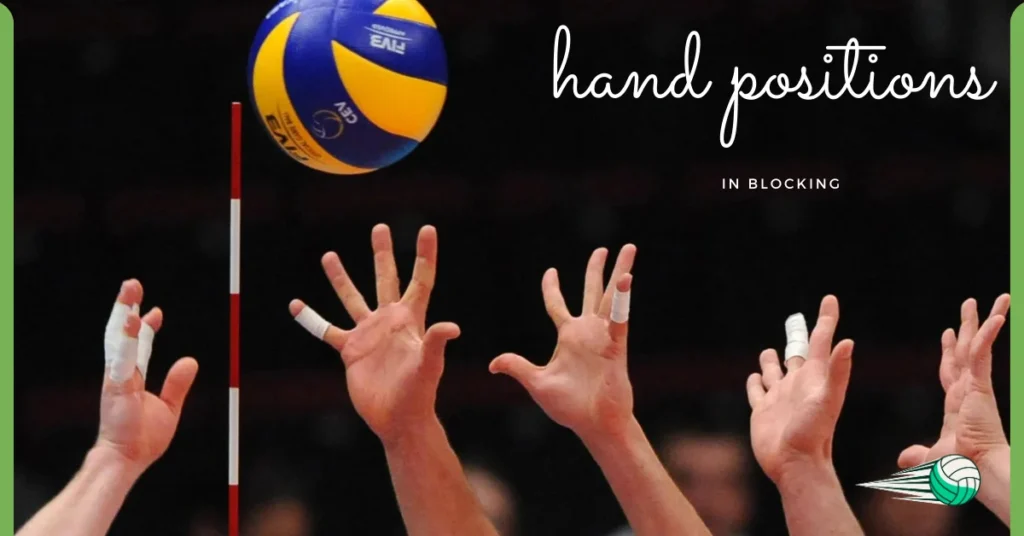
This blocking technique maximizes your blocking effectiveness and helps you direct it back into the opponent’s court.
Footwork for Volleyball Blocking
Good footwork for volleyball blocking is essential. It involves quick lateral movements and a strong jump to meet the ball at the net.
It allows you to position yourself effectively so that you gain momentum for a powerful jump, and react quickly to the opponent’s attack.
If you want to improve your blocking efficiency and other aspects of your game, practicing exercises such as executing a powerful volleyball spike that enhance your agility and footwork regularly can really help you.
Learn Why Does Volleyball Net Height Matters – 2024 Rules
How to Block in Volleyball – Be More Effective Blocker
Blocking is a skill that can help your team gain an advantage during a game. It starts with the serve where one team sends the ball over the net to the other side. Once the ball is in play, the opposing team tries to hit it back over the net.
A guide on how to block in volleyball can be a great source for enhancing your basic blocking skills. As a blocker, your job is to stop the ball from crossing the net and landing in your team’s court.
You do this by jumping up near the net with your arms up by forming a barrier to block the ball’s path. By knowing tips, how to be a good volleyball blocker, you can save a point for your team
Learn More: How to Jump Higher in Volleyball – 5 Secret Tips & Exercises
Timing is crucial in this– you need to jump just as the hitter is about to hit the ball. By being in the right place at the right time, you can effectively block the ball and prevent the other team from scoring.
Blocking requires focus, quick reflexes, and good positioning to be successful.
Tips to be a Better Blocker
Here are the 3 tips on how to block better in volleyball so you can use it to read your opponent’s attack and counter them effectively.
1- Reading the Opposing Team’s Setter
A great blocker anticipates the play. Reading the setter involves observing their body language and the set direction which helps you in positioning yourself correctly for the block.
2- Reading the Opposing Team’s Hitter
Watch the hitter’s approach and arm swing to predict where they intend to spike the ball. Effective blockers use these visual cues to adjust their position and timing.
3- Tips for Reading the Spike When Blocking
Anticipation is key. Watch the hitter’s approach, especially their shoulder and arm movement. This will give you an idea of where and how they might spike the ball. This will allow you to prepare your block accordingly.
Blocking for Short Players
Height matters in blocking because you have to jump higher than the net while the average net height is 7 feet and 11 inches (2.43m). That’s why taller hitters have a slight edge over shorter hitters because they can be challenging for shorter players to handle their powerful spikes but shorter players can still be effective blockers by focusing on certain technique and timing.
Tips for Successful Blocking for Shorter player
If you are shorter in height but want to be a pro blocker, you can work on your vertical jump and use your quickness to outmaneuver taller hitters.
Bonus Tip: Maximizing your reach and positioning are critical.
Timing is everything in blocking because if you jump too early, the hitter will spike over you and if you jump too late, the ball will be past you.
Practice jumping drills that enhance your reaction time and jump timing to become a better blocker.
How to Block a Volleyball Like a Pro
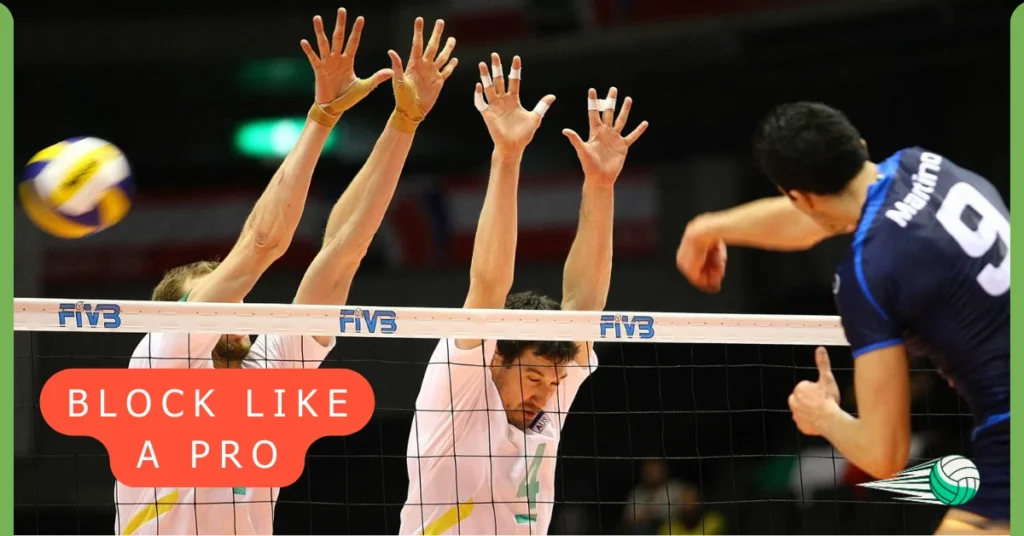
Want to block a volleyball and back over the net like a pro volleyball player? If you want to become a master in blocking, you focus on these things: perfect timing, technique and a little bit of strategy. And I am going to give you a simple and easy strategy for ideal blocking.
First of all, focus on your jumping at the right time because footwork is key; when your jump is ideal, you easily reach high to block the ball. Moreover, keep your feet shoulder-width apart and bend your knees slightly.
Whenever your opponent is ready to attack, jump as they make contact with the ball. Remember, it’s all about timing; by jumping at the perfect moment, you easily confuse the hitter and make a tough situation for them to score.
Best Exercises for Volleyball Blocking – Improve Your Blocking Skills
To improve your blocking skills and give tough times to your opponents, you must practice some super easy exercises.
For high jumps, you can practice squat jumps. In this simple exercise, you bend down like you’re sitting on a chair and jump up as high as possible. Do this exercise a lot to make your legs strong for blocking powerful hits.
Next, for quick feet, get low on the ground and then jump up high again. Do this from one side to another to make your feet super fast.
Keep practicing these moves and you’ll be a champ in blocking in a very short time.
How to Block a Line in Volleyball?
Blocking the line involves positioning yourself to intercept the ball along the sideline. This technique is essential when facing strong outside hitters.
Reading the opposing team’s setter and anticipating line shots can make this task easier.
Knowing the volleyball net height and using it to your advantage can also enhance your blocking effectiveness.
Final Words
Blocking is a complex yet rewarding skill in volleyball. By understanding how to be a more effective blocker in volleyball using unique blocking technique, footwork, and practicing regularly, you can significantly enhance your blocking prowess.
Use this how to block in volleyball guide to develop your skills and become an indispensable player on your team.
Whether you are learning how to play volleyball or striving to block a volleyball like a pro, these tips and strategies will set you on the path to success.

